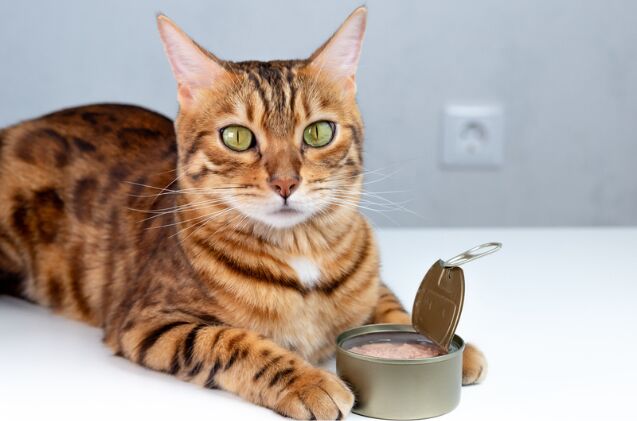Study Reveals Why Cats Are Obsessed With Tuna

Do you have a cat that goes crazy when a tuna can is opened? If so, you’re not alone! The connection between cats and tuna has long been recognized – but what is it about the canned fish that lights up their eyes and excites their tastebuds? The answer may surprise you…
A study published in Chemical Sense August 2023 reveals the secret behind this kitty addiction. Although both theories are often shared, it isn’t their known love of fish or the fact that it closely resembles canned cat food. Instead, it comes down to the way in which a cat’s tastebuds work and how that impacts the way that they taste their food.
Your cat’s sense of taste varies considerably from your own. For example, while people are often known to suffer from a sweet tooth, cats are ambivalent about sugar. They don’t prefer that sweet taste (like we usually do) but don’t avoid it. Why? It’s simple: they can’t taste it! Experts theorize that the cat lost the ability to taste sugars because it wasn’t a necessary aspect of their survival in the wild – they didn’t NEED the sugary foods, so their sweet taste receptor gene didn’t need to continue to develop and function.
“Since discovering that cats don’t have a functional sweet taste receptor, we did wonder what they would respond to instead,” explained Scott McGrane, sensory science expert at the Waltham Petcare Science Institute and the study’s lead author.
They discovered that cats were particularly attracted to umami, an often-overlooked taste category alongside sweet, salty, or bitter. This taste category is better known as “savory.”
Humans have dedicated receptor cells that detect the presence of the organic compound Carboxylic Acid. If the compound is present, we taste the food as savory. However, when detecting umami, a cat’s taste receptors bind to two different chemicals. These chemicals are present in high concentrations in tuna, giving it an even more robust savory flavor. The concentration is even higher in tuna than in other fish species, making it particularly tempting for our feline friends.
The team conducted a taste test with 25 subjects as part of the study. To test their taste receptors and how they impacted the cats’ preferences, they set up a series of water bowls with varying amounts of organic compounds, including nucleotides and amino acids, and a control bowl of water.
When allowed to explore the bowls, researchers noted that the cats were most attracted to the combinations that activated the umami receptors – the “savory bowls.”
What does this development mean for your cat and the development of cat products in the future? Understanding the attraction to savory foods, especially tuna, pet food manufacturers are better able to formulate diets that will appeal to their tastebuds. This means creating foods that our cat will actually WANT to eat.
This could be a powerful shift for those navigating medical conditions that trigger a loss of appetite. By offering a food they are more tempted to eat, they can encourage their cat to take in the nutrition needed for a full recovery.

Britt Kascjak is a proud pet mom, sharing her heart (and her home) with her “pack” which includes her husband John, their 2 dogs – Indiana and Lucifer – and their 2 cats – Pippen and Jinx. She has been active in the animal rescue community for over 15 years, volunteering, fostering and advocating for organizations across Canada and the US. In her free time, she enjoys traveling around the country camping, hiking, and canoeing with her pets.
More by Britt























